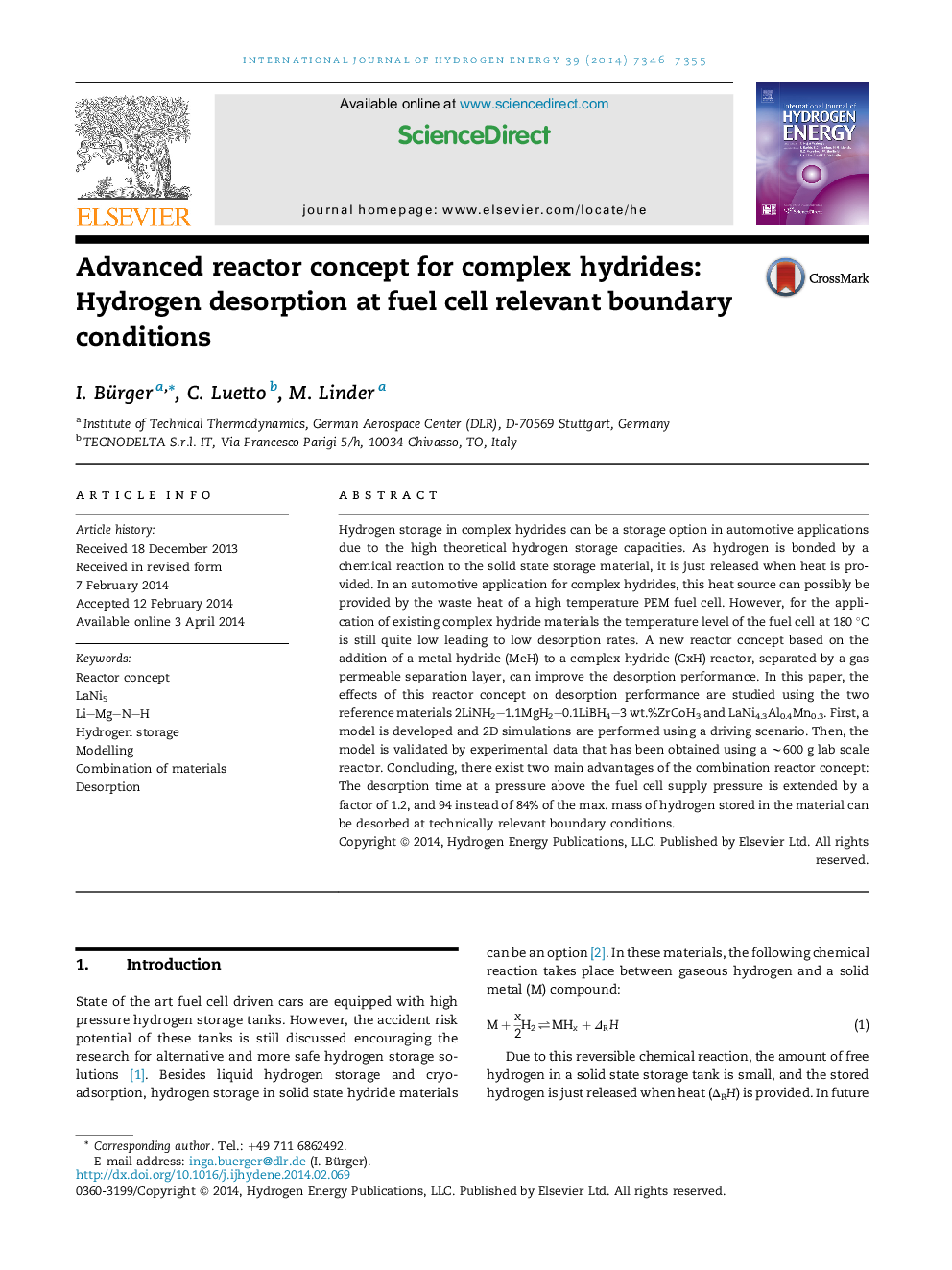| کد مقاله | کد نشریه | سال انتشار | مقاله انگلیسی | نسخه تمام متن |
|---|---|---|---|---|
| 1272709 | 1497495 | 2014 | 10 صفحه PDF | دانلود رایگان |
• New reactor concept for complex hydrides.
• Desorption reaction of complex hydride stabilized above fuel cell supply pressure.
• Model equations for Li–Mg–N–H validated for different desorption scenarios.
Hydrogen storage in complex hydrides can be a storage option in automotive applications due to the high theoretical hydrogen storage capacities. As hydrogen is bonded by a chemical reaction to the solid state storage material, it is just released when heat is provided. In an automotive application for complex hydrides, this heat source can possibly be provided by the waste heat of a high temperature PEM fuel cell. However, for the application of existing complex hydride materials the temperature level of the fuel cell at 180 °C is still quite low leading to low desorption rates. A new reactor concept based on the addition of a metal hydride (MeH) to a complex hydride (CxH) reactor, separated by a gas permeable separation layer, can improve the desorption performance. In this paper, the effects of this reactor concept on desorption performance are studied using the two reference materials 2LiNH2–1.1MgH2–0.1LiBH4–3 wt.%ZrCoH3 and LaNi4.3Al0.4Mn0.3. First, a model is developed and 2D simulations are performed using a driving scenario. Then, the model is validated by experimental data that has been obtained using a ∼600 g lab scale reactor. Concluding, there exist two main advantages of the combination reactor concept: The desorption time at a pressure above the fuel cell supply pressure is extended by a factor of 1.2, and 94 instead of 84% of the max. mass of hydrogen stored in the material can be desorbed at technically relevant boundary conditions.
Journal: International Journal of Hydrogen Energy - Volume 39, Issue 14, 5 May 2014, Pages 7346–7355
